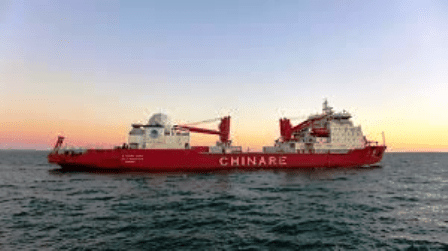(PONARS Eurasia Policy Memo) In recent times, Baltic State policies toward Russia have displayed a relatively unified front. This became abundantly clear in the aftermath of major events such as the two gas disputes between Kyiv and Moscow in 2006 and 2009, the Russian-led incursion into Ukraine in 2014 as well as the subsequent annexation of the Crimea peninsula, and the military intrusion in the Donbas region. Broadly, these events have led to a convergence in the three republics’ perceptions about EU policies toward Russia. This notwithstanding, such a confluence has proved to be oddly absent in the energy field, where one instead finds a patchwork of national policies and endless debates on the optimal mix between unilateral or regional policies. The lack of a regional-level coordinated approach toward energy security challenges—reinforced by diverging national priorities in the geopolitical sphere of energy vis-à-vis Russia—has dual side effects. On the one hand, it facilitates Moscow’s assertive energy diplomacy toward the region, which routinely attempts to undermine the full implementation of the Baltics’ diversification and integration process into the EU energy network while wielding geopolitical influence. On the other hand, it exposes the inability of the Energy Union to fully implement a common European vision in energy policy.
This memo advances proposals about what measures could be taken by the EU to better secure the Baltic States from dependence on Russia’s energy supply. In this regard, it argues that a coordinated diplomatic approach by Estonia, Latvia, and Lithuania is a sine qua non for fostering the three states’ energy sectors’ resilience in the face of pressure from Moscow. The memo also explains why collective energy security should be at the forefront of the bloc’s energy policy.
Baltic State Energy Strategy: Diversifying Away from Russia
Since independence was regained in 1991, energy reliance on Russia has become an ever-increasing concern in the Baltic States as it represented a major factor of subordination still bounding Estonia, Latvia, and Lithuania to their decade-long Soviet legacy. Heretofore, the three Baltic republics had, in fact, been completely dependent on Russian energy sources because of their supply network that had been developed during the Soviet era from the early 1960s. After independence, this condition continued and they remained energy islands isolated from EU markets, and, as such, they came to be the most vulnerable EU member states in terms of energy security. The reason for this is self-evident: all three countries were nearly 90 percent dependent on Russia for oil and roughly 100 percent for gas and electricity.
The structural conditions of the energy systems alone, however, was not the only reason behind the Baltics’ struggle for achieving energy independence. Another important driving factor for their energy diversification policies found its raison d’être in matters of a political nature. The interconnected energy network has allowed Moscow to take advantage of its privileged position as a monopolistic energy supplier to preserve a certain degree of geostrategic influence over its post-Soviet neighbors, making Estonia, Latvia, and Lithuania susceptible to possible supply cut-offs. This tendency manifested itself more frequently under the leadership of President Vladimir Putin, becoming a consistent means to achieve the objectives of Russia’s foreign energy policy. The most recent occurrences include the suspension of oil supplies to Latvian port operator Ventspils Nafta in 2003, to the Lithuanian oil refinery Mazeikiu Nafta in 2006 and, partially, to the oil supply rail route to Estonia in 2007.
In the light of such controversy, over the following years, the three states have moved to increase the autonomy of their energy positions vis-à-vis Russia by putting into place a number of initiatives aimed at eliminating the vestiges of energy dependence while integrating into the European energy network. To this end, the EU has been taking various steps to help the Baltic States in advancing energy diversification through funding programs and implementation of new policy directives.
In response to regional energy security concerns, the Baltic Energy Market Interconnection Plan (BEMIP) was developed in 2008 with the primary objective of making the Baltic electricity and gas market fully integrated with the EU, thereby ending the energy isolation of the three states. As part of the BEMIP, a number of projects have been implemented.
In the electricity sector, key infrastructure initiatives include:
- Two high-voltage direct-current (HVDC) submarine power cables, Estlink 1 and Estlink 2, linking Estonia and Finland;
- The NordBalt power cable, also known as SwedLit, between Lithuania and Sweden;
- LitPol, a link between the Lithuanian and the Polish electricity systems.
The major gas sector projects are:
- Interconnection Poland-Lithuania (GIPL), which will connect the two countries’ natural gas transmission systems and is expected to be operational at the end of 2021;
- Balticconnector, a bidirectional natural gas pipeline between Estonia and Finland that entered commercial use this year in 2020.
As evinced by the latest study produced by the Center for European Policy Studies (CEPS) on the topic, the BEMIP initiative has successfully promoted the creation of an integrated energy market in the region. It states that it has been “a useful instrument and collaboration platform” and that its large-scale projects have favored important developments in the EU Strategy for the Baltic Sea Region (EUBSRS).
According to the Commission, the Baltic States are today among the best interconnected regions in Europe with an interconnection level of 23 percent—a very positive result as compared with, for instance, the 6 percent of the Iberian peninsula. This seems to prove that the priority to diversify supply away from Russia set in the post-2014 European Energy Strategy has been satisfied. Nonetheless, it is still far off from accomplishing the process of energy integration of the Baltics with the European energy network: an essential condition for a truly integrated regional gas and electricity market.
Common Goals, Diverging Actions
The Baltic States do not present a unified front on gas and electricity issues due to the lack of inter-regional agreements between key actors. As the 2019 Baltic Security Strategy report shows, “Regional cooperation is also limited by the domination of the self-help principle and the lack of trust among the states.” Arguments often arise about either the actual methods of implementing the synchronization of the Baltic electricity grid with the Continental European network (CEN)—the sense of extreme urgency that prevails in Lithuania over the issue does not figure in the other two countries —or where to allocate regional strategic projects such as LNG terminals. Moreover, “despite their strategic significance, become hostages to small-gain policies, which prolongs their implementation and extends the period of energy insecurity for all the actors involved.”
This is evident by the majority of the advocated diversification plans, which have either experienced delay and, in turn, have been (a) implemented unilaterally or (b) suspended (e.g., the Visaginas nuclear power plant that was halted in 2014), thus undermining EU goals for joint regional action. In this sense, examples of defecting outcomes are manifold. For instance, due to a lack of progress in trilateral negotiations over the allocation of a regional LNG terminal, Lithuanian authorities decided to pursue their own independent energy security strategy moving ahead with the construction of the terminal in Klaipeda.
The absence of union between Estonia, Latvia, and Lithuania when it comes to taking decisions about collective energy policies has thus resulted in an uncoordinated, regional-level approach. A recent (2015) contribution noted that the “combination of domestic political fragmentation and ongoing Russian influence in political and economic sectors precludes these states from making more decisive progress away from Russia dependency,” which in turn leaves Moscow with greater room in which to maneuver.
The Way Forward: Harnessing Regional Cooperation
Regional energy integration in the Baltics may well help develop a more diversified and resilient energy market, thus reducing the dependency of these states on imported sources. For this to be achieved, however, some steps need to be taken with respect to the BEMIP initiative, within which shortcomings need to be addressed. Despite positive results, the initiative still lacks coordination with national energy strategies and does not guarantee a coherent energy development roadmap at either member state or EU level.
Differences in how Estonia, Latvia, and Lithuania address energy cooperation should be publicly addressed between the parties. Varying threat perceptions should not represent a barrier to the development of practical cooperation. The inclusion of a roadmap of Baltic Energy Cooperation within the BEMIP may be a good solution of how such divergencies can be reconciled. The roadmap should be used as a guideline for cooperation. Small-scale reconciliation might create trust and should be used to move the three states’ energy partnership forward.
For its part, the EU is to be allowed greater oversight on energy policy so that the needs of individual member states are better taken into consideration when it comes to framing regional policies. Areas where improvements are necessary include data analysis and policy coordination. Current regional security coordination among Transmission System Operators (TSOs) is framed by the Baltic Regional Security Coordination Agreement. Coordination areas include coordinated security analysis and capacity calculations, outage planning, and management functions. With respect to the gas sector, cooperation has been restricted by (a) financial burdens of additional regional security measures and (b) the lack of a common understanding about the quantity of security measures deemed necessary to prevent accidents or possible hazards by third parties. This precluded the Baltic governments from carrying out common assessment of what role critical infrastructures play, which is an indispensable condition to advance creation of a single Baltic natural gas market. Common definitions of budget allocation schemes in relation to regional security measures is encouraged to facilitate common assessment of critical infrastructures’ role.
Another key area is information sharing. Operative coordination between TSOs is the main mechanism for the provision of operational security of the energy infrastructure. The exchange of information among TSOs allows for identification and mitigation or prevention of operational security disturbances and challenges. However, information-sharing between TSOs and power suppliers often comes to be slow with regard to operational decisions. In this regard, intensification of information sharing is needed to allow for a better promptness in decision- and policymaking.
As evinced by the latest Baltic Security Strategy report, there is a lack of common training, or intra-regional physical security exercise among TSOs in the three Baltic States. Also, regional-level exercises to test for blackout scenarios are absent. Existing intra-regional cooperation in critical energy infrastructure protection (CEIP), which is insufficient in a context of growing security menaces, is limited by the absence of regional awareness and understanding of the threats’ interconnectedness, notably those coming from the Eastern neighborhood. Improvement of inter-TSOs cooperation in common training and regular cross-border exercises (including the set-up of preventive action and emergency plans) may well contribute to enhance inter-regional energy security awareness, thereby unifying perceptions of threats to energy security.
Conclusions
Due to their long-lasting dependence on Russian resources, energy security has steadily been a sensitive issue for the Baltic States. Therefore, regional cooperation came to be recognized as a major tool for the conduct of energy diversification policies within the three countries’ energy sectors. To date, Estonia, Latvia, and Lithuania, with EU support, have actively endeavored to develop infrastructure-building measures to foster the integration of their energy markets. The steps taken so far have contributed to increased regional energy sovereignty, thereby opening up opportunities for the three to break their total dependence on Russia’s supply monopoly. However, there is a long way to go to create a truly integrated, unified, and resilient regional gas and electricity market zone. Striking the right balance between solving past energy security concerns and making full use of the potential offered by recent achievements will be challenging. But if done right, the Baltic States can be witness to how a collective energy security approach is the right way to speak with one voice on energy policy.
Gianmarco Riva is a Graduate Student of Interdisciplinary Research and Studies on Eastern Europe at the University of Bologna, Italy.
[PDF]
Homepage image credit.











